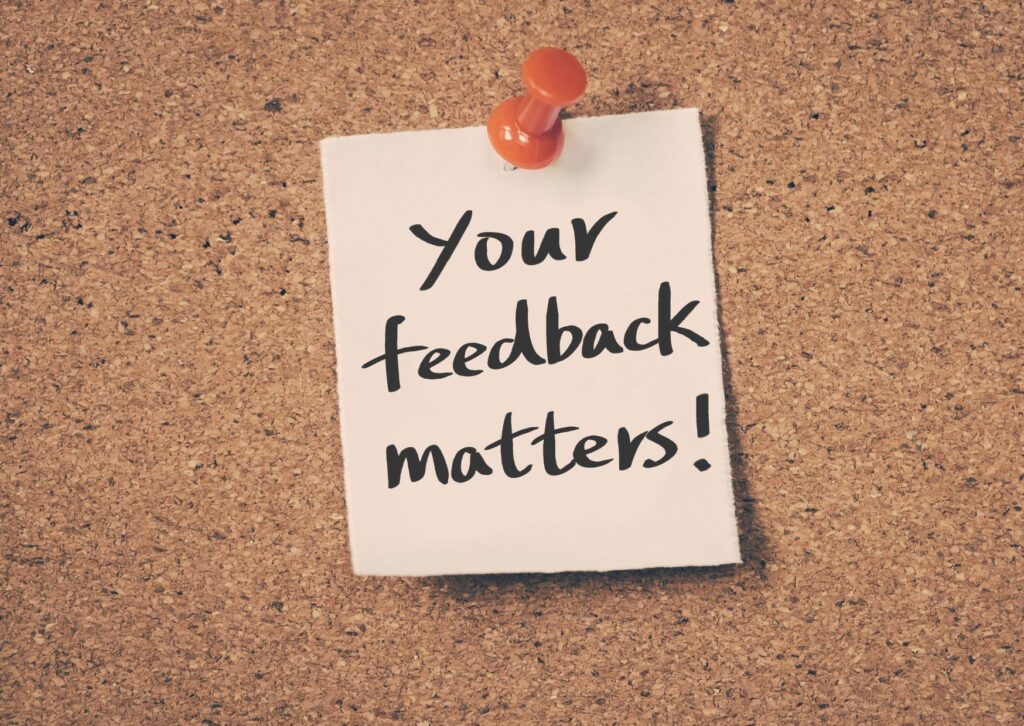Wellness Goals in the Workplace: Improving Employee Health
Wellness goals in the workplace have become increasingly important with the continuous growth of sedentary behaviours and unhealthy lifestyles.
Wellness goals represent a commitment to supporting the health and wellbeing of every employee.
As the landscape of modern work continues to evolve, it’s evident that the physical, mental, and emotional wellbeing of staff is paramount.
Working days aren’t just about hitting deadlines and meeting targets, it’s about creating a space where individuals feel valued, energised, motivated and healthy.
These factors all contribute towards hitting deadlines and meeting targets.
In this blog, we’ll explore the significance of workplace wellness, its range of benefits, and practical strategies for its implementation.
As a facilitator of wellbeing workshops I’ve seen the range of benefits that wellness goals have had on employees within a business.
Whether you’re a business leader, a HR enthusiast, or an employee looking to champion healthy change, understanding and prioritising wellness goals in the workplace can revolutionise your organisation.
Contents
The Benefits of Setting Wellness Goals in the Workplace
10 Key Wellness Goals for the Workplace
Strategies to Implement and Achieve Wellness Goals
How Achieving Wellness Goals Changed These People’s Lives

What are Wellness Goals?
Wellness goals are specific, measurable health-related objectives set to improve an individual’s overall health and wellness.
These goals encompass various dimensions of health, including physical, mental, emotional, and even social aspects.
Unlike generic resolutions like “I want to be healthier,” wellness goals are tailored to address particular areas of one’s life, providing a clear path and actionable steps towards achieving better health.
For instance, a wellness goal might be as specific as “I will walk 10,000 steps daily for the next month” or “I will practice mindfulness meditation for 10 minutes every morning.”
These goals serve as a roadmap, guiding individuals towards healthier habits and routines.
In the context of the workplace, wellness goals are often integrated into broader health and well-being programs, aiming to foster a healthier, more productive, and more engaged workforce.
In essence, wellness goals are commitments we make to ourselves, pushing us to prioritise our health and wellbeing, no matter the setting.
They remind us that taking care of our wellbeing is an ongoing journey, one that requires intention, effort, and consistency.

The Benefits of Setting Wellness Goals in the Workplace
Setting wellness goals in the workplace goes beyond just promoting good health.
It creates a ripple effect, touching various facets of the organisation.
Here are some of the standout benefits:
Enhanced Productivity
When employees feel their best, they perform their best.
Wellness goals can lead to improved concentration, reduced fatigue, and a sharper mind, all of which contribute to better work output.
Reduced Absenteeism
Healthier employees mean fewer sick days.
By promoting wellness, companies can see a significant reduction in absenteeism, ensuring that the workforce is consistently present and engaged.
Improved Employee Morale
A focus on wellness often translates to employees feeling valued and cared for.
This boosts morale, fostering a positive work environment where individuals are motivated to contribute their best.

Lower Healthcare Costs
Preventive measures, like setting and achieving wellness goals, can lead to fewer health issues in the long run. T
his can result in reduced healthcare costs for both employees and employers.
Better Team Cohesion
Wellness programs often involve group activities, be it fitness challenges or mental health workshops.
These collective experiences can strengthen team bonds, promoting collaboration and unity.
Attracting and Retaining Talent
In today’s competitive job market, wellness initiatives can set a company apart.
Prospective employees are drawn to organisations that prioritise their wellbeing, and current employees are more likely to stay.
Enhanced Creativity and Innovation
A healthy mind is a creative mind.
By promoting mental and emotional wellbeing, companies can foster an environment where innovation thrives.
Wellness goals can spark creativity and potentially lead to new ideas for the organisation.
Reduced Stress Levels
Wellness goals often address stress management.
By equipping employees with tools and techniques to handle stress, companies can ensure a more balanced and stress-free workplace.

Promotion of Long-Term Health
While immediate benefits are evident, the true value of setting wellness goals is in the long-term health advantages they offer.
These goals encourage habits that can lead to a lifetime of good health.
Positive Company Image
A company that prioritises the wellbeing of its employees is seen in a positive light.
This can enhance its reputation in the industry, with clients, and among potential hires.
Overall, integrating wellness goals into the workplace is a win-win.
Employees enjoy better health and wellbeing, and employers benefit from a more productive, engaged, and healthy workforce.
10 Key Wellness Goals for the Workplace
Incorporating wellness goals into the workplace can be transformative.
These objectives not only promote individual health but also foster a more vibrant and productive work environment.
Here are ten pivotal wellness goals that every organisation should consider:
1. The Two Litre Goal / Half a Gallon
Hydration plays a crucial role in overall health.
The human body is approximately 60% water so it’s important we’re keeping it hydrated.
The “2 Litre Challenge” involves encouraging employees to drink at least 2 litres of water throughout the workday.
Proper hydration can boost energy levels, improve skin complexion, and aid in digestion.
By setting up water stations or providing branded water bottles, companies can make this goal more achievable.
Regular reminders or friendly competitions can also motivate employees to keep up with their water intake.
This is a very easy wellness goal to implement for companies and it’s something we emphasise in our “Improve your physical health” webinar

2. Regular Movement Breaks
In a typical office setting, it’s easy to remain seated for hours on end.
Even for remote or hybrid workers employees can find themselves sitting for long periods of time.
However, this sedentary behaviour can lead to various health issues, from back pain to reduced circulation.
A wellness goal to introduce regular movement breaks can be extremely beneficial for employees.
Encourage employees to take a short 5-minute break every hour to stretch, walk around, or even do some light exercises.
This not only rejuvenates the body but also refreshes the mind, leading to increased focus and productivity.
Employees can document the amount of movement breaks on a tick sheet or calendar.
This helps to make it measurable and ensures employees stay on track.
Check out our blog “How Breaks at Work Can Skyrocket Productivity“

3. Daily Step Goal
Encourage employees to achieve a specific step count each day, such as 10,000 steps.
This goal promotes physical activity and breaks the monotony of sitting for extended periods.
Companies can facilitate this by organising short walking meetings, designating specific times for group walks, or even setting up step-count challenges with rewards for milestones achieved.
Tracking steps can be done using smartphones, wearable devices, or pedometers.
Achieving the daily step goal not only boosts physical health but also offers mental refreshment, especially if some of those steps are taken outdoors.
Making this a continuous wellness goal contributes to a healthy and active workforce.

4. The Gratitude Wellness Goal
Set a daily objective for employees to express gratitude at least once during the workday.
This could be in the form of a thank-you note to a colleague, a moment of reflection on something positive that happened, or even a shared gratitude session where team members voice something they’re thankful for.
Studies have shown that practicing gratitude regularly can lead to increased happiness, reduced stress, and even improved immune function.
By acknowledging the good in our lives, we foster a positive mindset, which in turn enhances our overall health and wellness.
Encouraging a culture of appreciation and gratitude in the workplace not only strengthens team bonds but also promotes individual wellbeing.
At Loving Life, we deliver a “Harnessing Gratitude Workshop” that helps employees to foster a sense of gratitude towards their workplace and colleagues.

5. Staying Active Goal
This wellness goal champions the significance of consistent physical activity in our lives.
By setting a target of exercising at least three times a week, individuals are nudged towards a routine that can enhance cardiovascular health, support mental welbeing, aid in weight management, and boost overall energy levels.
The NHS recommend at least 150 minutes of moderate exercise each week.
That’s three 50 minute sessions or five 30 minute sessions.
Whether it’s a brisk walk, a gym session, or a yoga class, this goal underscores the idea that regular movement is key to a healthier, happier life in and out of the workplace.

6. Daily Stretch Goal
Incorporating a few minutes of stretching into each workday can work wonders for both the body and mind.
This goal encourages employees to take short breaks to engage in simple stretch routines, helping to relieve muscle tension, enhance flexibility, and boost overall energy.
Whether it’s a quick spinal twist at the desk or a hamstring stretch by the window, these moments of movement can combat the stiffness of sitting.
Stretching can also help to rejuvenate the mind, ensuring optimal wellbeing and productivity throughout the day.

7. Alcohol-Free Goal
Nobody likes to be hungover. Especially at work.
Choosing to go alcohol-free, even if just for a few days a week, can have profound benefits on one’s health and wellbeing.
This goal encourages employees to take a break from alcoholic beverages, allowing the body to recover and detoxify.
There are so many benefits to comsuming less alcohol.
Some of these include: improved sleep quality, better hydration, enhanced mental clarity, and reduced calorie intake.
By embracing this goal, employees can experience increased energy, sharper focus, and a general sense of feeling lighter and more refreshed.
This contributes positively to both their personal and professional lives.
Why not check out our blog on “10 Alcohol Free Work Socials“

8. Positive Self-Talk Goal
Cultivating a habit of positive self-talk can be transformative for our mental wellbeing.
To make this into a tangible goal, consider setting aside a few minutes each day for self-reflection and affirmation.
This could involve writing down three things individuals did well, repeating positive mantras, or even visualising successful outcomes for upcoming tasks.
By dedicating time daily to reinforce positive thoughts and drown out self-doubt, we not only boost our self-esteem but also build resilience against external stressors.
Over time, this practice can shift our default mindset, allowing us to approach challenges with a more optimistic and confident attitude.

9. Daily Fruit Challenge
Committing to eating a serving of fruit every day is a nourishing choice for our overall health.
Fruits, rich in essential vitamins, minerals, and antioxidants, offer numerous benefits, from boosting our immune system to aiding digestion and providing sustained energy.
By ensuring a daily intake of these natural delights, we fortify our bodies with vital nutrients.
Whether it’s starting the day with a refreshing orange, having berries as an afternoon snack, or savouring an evening slice of watermelon can greatly enhance physical wellbeing.
This consistent habit also paves the way for making healthier dietary decisions.

10. Mindful Monday Goal
Start the week with a focus on mental wellbeing.
Dedicate Monday mornings to to mindfulness activities in the workplace.
This could involve a 10-minute guided meditation session in the morning, workshops on stress management, or even creating quiet zones where employees can take a few moments for deep breathing and reflection.
By prioritising mental health at the beginning of the week, employees can approach their tasks with a clearer mind and reduced anxiety.

Strategies to Implement and Achieve Wellness Goals
Achieving wellness goals requires more than just setting intentions; it demands actionable strategies that can be consistently followed.
Here are some effective approaches to ensure these goals are not only set but also achieved:
Set Clear, Measurable Objectives
Instead of vague goals like “eat healthier,” opt for specific targets such as “consume five servings of vegetables daily.”
Following a specific goal setting framework will allow individuals to stay consistent with and achieve their wellness goals.
We deliver a “Goal Setting Workshop” online or in person to help companies educate their employees with this.

Break Down Larger Goals
If a goal feels overwhelming, break it into smaller, more manageable tasks.
For instance, if the aim is to exercise more, start with 10-minute daily workouts and gradually increase the duration.
Our wellness goals must be achievable for us to feel confident in continuing with them.
Regular Monitoring and Tracking
Use apps, journals, or charts to track progress.
Measuring our wellness goals gives us a clear view of our progress.
Seeing tangible evidence of your efforts can be a significant motivator.
Stay Accountable
Share your goals with a colleague, friend, or family member.
Having someone to check in with can keep you on track.
When we report our wellness goals to others, we’re more likely to stay consistent with them.

Celebrate Small Wins
Every milestone, no matter how minor, is a step closer to the overall goal.
Celebrate these achievements to maintain motivation.
It’s okay to be proud and pat yourself on the back when you achieve success
Stay Educated
Continuously educate yourself about the benefits of your wellness goals.
The more you understand the “why” behind them, the more likely you are to stay committed.
You can also aim to connect the “why” with your deeper purpose.
For example: I must exercise three times a week because it’s important to stay fit and healthy for my children.
Create a Supportive Environment
Surround yourself with positive influences and resources.
This could mean decluttering your workspace, stocking up on healthy snacks, or joining a group that shares a similar goal.
Aim to get rid of, or hide the things that throw you off track.

Stay Flexible
Life is unpredictable.
If you miss a day or face a setback, don’t get discouraged.
Adjust your strategies, and remember that every day is a new opportunity.
One bad day will not define you!
Visual Reminders
Place reminders around your workspace or home.
This could be post-it notes, vision boards, or even alarms to remind you of your daily tasks related to your wellness goals.
Aim to move these notes or reminders each day, so they don’t just end up becoming part of your surroundings.
Seek Feedback
Regularly check in with yourself or others to assess how you’re doing.
Feedback can offer valuable insights and help refine your approach.
By integrating these strategies, the journey towards achieving wellness goals becomes more structured, enjoyable, and ultimately successful.

How Achieving Wellness Goals Changed These People’s Lives
Achieving wellness goals can have a transformative impact on individuals’ lives. Here are two stories that vividly illustrate this impact:
Adele’s Transformation
Adele’s Story: The renowned singer Adele stunned the world with her remarkable transformation.
In 2021, Adele shared her wellness journey of losing 100lbs over two years, emphasizing it was for personal satisfaction and combating anxiety.
Her regimen included weight lifting, circuit training, and exercising three times a day during the initial Covid-19 quarantine.
Adele’s approach highlighted the importance of exercise for mental wellbeing, stating it helped manage her anxiety, particularly during her divorce.
Her journey underscores the empowering aspect of wellness goals for both physical and mental health.
Read more about Adele’s transformation here.

Jaci’s Wellness Journey
Jaci’s Story: Jaci embarked on a wellness journey by taking small steps towards healthier habits.
Through a series of manageable changes, she successfully improved her health, showcasing that a steady and gradual approach can lead to sustainable wellness.
Her story is an inspiring example of how minor lifestyle adjustments can accumulate to create significant positive change. Read Jaci’s full story here.
Clay Abey’s Hydration’s Impact
Clay’s Story: Growing up in the South, where sugary drinks are a norm, the author embarked on a transformative journey.
In an experiment spanning 30 days, the author chose to drink between 72 and 84 ounces of water daily, sidelining the usual sugary beverages.
The results were palpable. Energy levels were revitalised, skin radiance improved, and there was a noticeable weight reduction. Additionally, cognitive functions sharpened, and joint movements became more fluid.
This journey accentuates the profound effects of hydration on overall well-being, emphasizing the benefits of choosing water over sugary alternatives.

As we conclude on wellness goals at work it’s important to remember that prioritising employee wellness is extremely important
Setting and achieving wellness goals is not just about individual health but about fostering a vibrant, productive, and healthy workplace.
From the stories of renowned figures to personal accounts from various walks of life, the transformative power of wellness choices shines through.
Whether it’s encouraging daily stretches, promoting hydration, or cultivating a culture of positive self-talk, each initiative contributes to a healthier, more engaged workforce.
As organisations and employees alike, let’s champion these wellness endeavours, recognising their profound impact on both personal wellbeing and collective success.
Author
Tyler Lowe – Health & Wellbeing Speaker
BSc Sport & Exercise Rehabilitation


